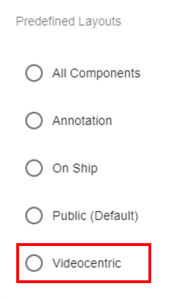| Table of Contents |
|---|
What is Ocean Networks Canada doing with this video and data
Ocean Networks Canada (ONC) is an ocean observing facility hosted by the University of Victoria (UVic). ONC has vast networks of underwater cable infrastructure for the purpose of live and continuous communications with hundreds of instruments. These instruments record live data while many hundred to thousands of meters underwater, and can go through diverse and rare marine environments.
ONC often has to maintain this cabled infrastructure and instrumentation throughout the year. We go out to sea with contracted vessels with access to Remote Operated Vehicles (ROV)s. These ROVs record their path while performing operative actions and are excellent sources for opportunistic visual observations of species.
Become an Expert Reviewer
We are requesting help from taxonomic experts! Please get in touch if you are or know someone who qualifies as either:
- undergrad or graduate students in related fields
- post-graduates or researchers
- taxonomic specialists
- citizen scientists
Contributors will be rewarded with attribution to ONC's uploaded datasets to OBIS. ONC is also prepared to provide participation incentives like potential swag giveaways to the most dedicated Expert Reviewers!
If you are interested in becoming an Expert Reviewer, please reach out to us through [insert OBIS-specific ONC email] or sign up and contact out our [insert our science hub group] on ONC's Science Hub social media.
| Tip |
|---|
Register for an Oceans 3.0 account & get access to the Expert Review Page
|
How to review biological annotations
| Panel | ||||||||||||||
|---|---|---|---|---|---|---|---|---|---|---|---|---|---|---|
| ||||||||||||||
Reach out to our staff to become an Expert Reviewer as described in SeaTube V3 Expert Review Help - Become an Expert Reviewer ONC staff will send out an invitation to start reviewing a new dataset. These will be in the form of completed dives. Please wait until there has been an invitation sent for a particular dive event before reviewing any observation annotations. |
| Tip | ||
|---|---|---|
| ||
|
| Panel | ||||||||||||||
|---|---|---|---|---|---|---|---|---|---|---|---|---|---|---|
| ||||||||||||||
Go to the dive page in SeaTube V3 after signing into your account with Oceans 3.0. The link should be provided in the invitation email. You can alternatively navigate there yourself under Expedition Management. Look for the dive name mentioned in the email. ONC staff will send out an invitation to start reviewing a new dataset. These datasets will be in the form of completed dives with video footage. Click on the play button in the list or to the right in the catalog details to open. |
| Panel | ||||||||||||||
|---|---|---|---|---|---|---|---|---|---|---|---|---|---|---|
| ||||||||||||||
Click the ellipses (...) at the blue top bar of the dive page to select your widget view. We strongly recommend the "Videocentric" view at this time. In the future there may be a "Expert Reviewer" predefined layout, which should be set to the default. We are hoping to implement this sometime in the near future. |
| Tip | ||
|---|---|---|
| ||
|
| Panel | ||||||||||||||
|---|---|---|---|---|---|---|---|---|---|---|---|---|---|---|
| ||||||||||||||
Click the three lines on the top bar of the annotation list to access the filter parameters. From there you can select the Add Filter option. Select the WoRMS Taxonomy from the dropdown list of options. This is required for streamlined and simple access to only the biological annotations in the annotation list. |
| Tip | ||
|---|---|---|
| ||
|
Contacts for questions or suggestions
ONC is happy to communicate with our Taxonomic Experts! We recognize that there is room for improvement, and would like to collect information from our user base to help inform changes to our infrastructure in the future.
If you have any questions about the Taxonomic Expert Review process, or if you have any suggestions on how to improve it, please reach out to:
- [insert OBIS-specific ONC email]
Additionally, you can reach out to the Data Stewards responsible for this project:
- Sean Tippett - stippett@oceannetworks.ca
- Greg Baillie - gbaillie@oceannetworks.ca






